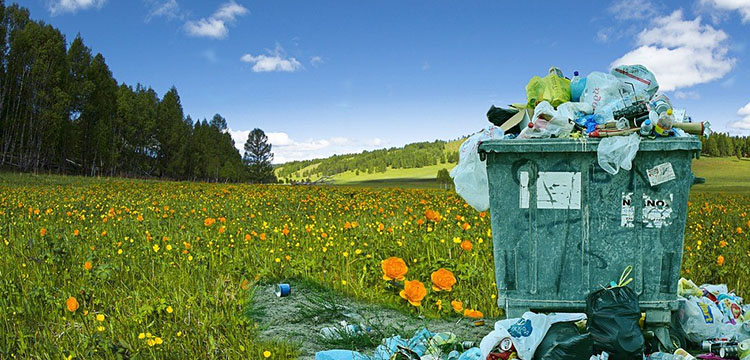
The recovery of waste materials has long been the norm, to the point that there was no waste destined for disposal, residues from domestic and craft activities, so many urban raw materials being in all reintroduced into agricultural and industrial production systems.
With the breakdown of this complementarity between city, industry and agriculture around the end of the XIXth, beginning of the XXth century, the notion of waste appeared and the need to acquire technical and financial means to ensure its elimination. Cities then opted for incineration, a process which meets hygienic precepts of the time, and offers the hope of continuing to reuse residues, in particular in the form of district heating.
This period of resistance (1880-1920) followed by that of renouncement to the recovery of by-products whose treatment becomes more and more expensive. Residues, which have long had a positive value as part of widespread recycling, acquire a negative value, since disposal represents a cost for communities. Faced with the increasing volumes of materials and their increasing complexity, elimination became widespread during the 20th century with the use of two processes: incineration and landfill, wild then controlled.
In the 1970s, France adopted a public policy dedicated to waste management. The founding text of this policy, the framework law of July 15, 1975, was drawn up in a particular context, marked by the oil crisis. The sudden awareness of the country’s energy dependence is felt to be a very serious threat. With a view to combating the waste of energy and raw materials, waste tends to be considered as a potential secondary raw material.
The recovery principle is enshrined in the 1975 law: the elimination of waste must be ensured under conditions suitable for facilitating the recovery of reusable materials, elements or forms of energy” (Law No. 75-633 , title V, article 15), without however, setting up a systematic and large-scale recovery and recycling system.
The first local experiences of recovering certain materials (paper, cardboard, glass) appear, often associated with charitable initiatives. However, the priority is then to generalize collection and disposal systems throughout the territory, especially in rural areas, recovery being secondary.
It was not until the vote on the second framework law on waste management (July 13, 1992) that the obligation to recover waste by reuse waste management methods, recycling or any other action aimed at obtaining from waste reusable materials or energy ”(Law No. 92-646, Article I, 3rd paragraph).
The development of recovery and recovery results from the implementation a few months earlier (in April 1992) of the Eco-Packaging system. The registration of recovery in French regulations took shape through the emblematic measure of the 1992 law: the ban on burying raw waste from July 1, 2002. This involves diverting landfills waste that has not been subject to prior recovery, and to limit landfill to only ultimate waste (ultimate in the sense of this law a waste, resulting or …).
The interpretation of the concept of ultimate waste is decisive since it is the share of waste remaining after the recovery effort. It is up to local players, in the context of departmental plans in particular, to give meaning to ultimate waste, and therefore to determine the nature and the degree of recovery to be achieved before landfilling.
This measure was quickly interpreted as the end of landfill by the end of 2002, and contributed to a massive recourse to cremation, while social protest, which was believed to be focused on the disposal in landfill, moves from landfill to incineration.
